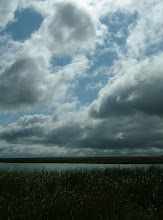Where did Anson Johnson and Jay le Rondein and such modern architects get their inspiration for the low flat topped horizontally oriented style that they are so well known for? In 1947, a group of American architectural students took a southern European field trip that included Andelania, an island off the coast of Spain. This large island of volcanic mountains had only flat roofs on their homes and offices and buildings. The building codes of the independent island state cited concerns about rain and snow runoff harming people outside the building and undermining the foundations of the buildings by dumping too much precipitation too close to the building itself, so the flat topped roofs were slightly concave to collect the rain water and snow melt water and channel it through plumbing to be deposited far from the building. In fact, the towns' first sewer systems were to carry this roof rain water away from the buildings and were only later copied to carry waste water away from homes via underground plumbing systems. In early times, the rain water went through underground piping while household sewage was carried out of town in barrels and dumped. Later, a piggyback system was build in a layer on top of the rain drainage system to carry the household waste. The architecture students of the '40s liked the aesthetics of the horizontal flatness of the buildings an the layers of the multistory buildings. They found it to be an interesting contrast to the sloping and vertical nature of the surrounding cliffs and mountains of the island, and carried the images back home to their American architectural studios where it played in a rebellious and innovative way against the overdone steeply pitched roofs of the Victorian and Gothic and Colonial Revival houses popular at the time. The completely flat roof did present problems of excessive snow accumulation, so the style quickly evolved into the low pitched roof of the suburban ranch style, with just enough pitch to shed snow but not so much as to echo the steepness of the traditional residential steeply peaked houses so popular then.
Only when architectural historians visited the island in later years was the true origin of the flat roof uncovered. In much earlier historic times, the population of the island worshipped Vol, a god that was thought to reside inside the volcanoes. When Vol was angry, legend said, the earth would shake and tremble. If Vol got angrier still, a dome of one of the island mountains would begin to swell and bulge. If Vol became even angrier, ash and fire and lava would spew from the dome and cover fields and roads and houses and towns and kill wildlife and livestock and people. At the first sign of displeasure, the people would hold meetings and attempt to figure out who among them was displeasing the volcano god. If someone had plowed a field the wrong direction, and had pointed the rows directly toward the volcano god, it was decided that Vol was angry that the person did it to mock him, and that person could be declared the source of the trouble and killed at the base of the rumbling dome. These 'trials' escalated as the volcanic activity escalated, with sometimes whole villages sacrificed to appease the god. In early times, shelters consisted mainly of a ramada type architecture of post supporting beams that supported thatching of reeds and rushes and grasses to shed rain. One village higher on the slopes, where snowfall was prevalent, had adapted a peaked shape to their roofs to more effectively shed the snow. This shape for houses was becoming popular when the volcano of that peak began to show activity. The usual violators were sought out and sacrificed but the volcano erupted one day in late summer anyway. The first thing to light on fire from the burning cinders blasted from the volcano were the peaked thatched roofs. Coincidentally, as the lava flowed down from the dome above, this city was engulfed and a nearby village that had not adopted the peaked roofs was spared. A swelling in the land above the village diverted lava flow to either direction around it, but it did appear from the village as though some guardian hand might have caused the flow to go to either side. This was the origin of the prohibition against peaked roofs. They were for many centuries seen to offend the volcano god because they were thought to be an image of his shape and therefore a mockery of the god himself. Eventually, when Christian missionaries in the 1890s converted the Vol worshippers to Catholicism, the beliefs in Vol and the sacrifices to him were ceased. But still, when the village wrote up its 'modern' building code ordinances, scientific reasons were offered up for various dangers and disadvantages of sloped roofs, and flat roofs were mandated by law. To this date, the cities and the state still mandate flat roofs, and manage to find various engineering data sets which they cite in order to support this preference.
It is a certainly good thing that religion and ancient myth are never allowed to enter into the laws of the obviously much more advanced and civilized country that is the United States of America.
Subscribe to:
Post Comments (Atom)

No comments:
Post a Comment